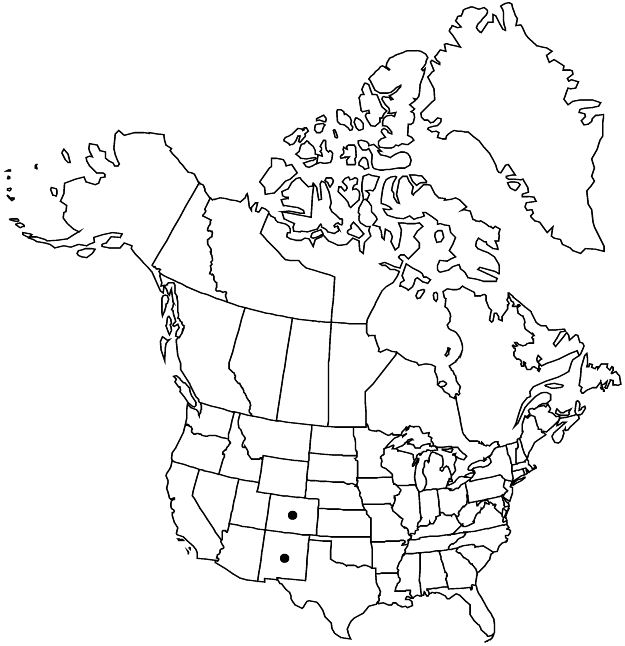Mentzelia laciniata
Ann. Missouri Bot. Gard. 21: 173. 1934.
Plants biennial, bushlike or candelabra-form. Stems solitary, erect, straight; branches distal or along entire stem, distal or proximal longest, antrorse, straight; hairy. Leaves: blade 52–112 × (5.4–) 8.3–25 mm, widest intersinus distance 1.4–4 mm; proximal oblanceolate or elliptic, margins pinnatisect, lobes 8–20, slightly antrorse, 4.2–7.4 (–10.7) mm; distal oblanceolate, elliptic, or lanceolate, base not clasping, margins usually pinnatisect, sometimes pinnate, especially near apex, lobes 8–18, slightly antrorse, 3–10.8 mm; abaxial surface with simple grappling-hook, complex grappling-hook, and needlelike trichomes, adaxial surface with needlelike trichomes. Bracts: margins usually entire, rarely pinnate. Flowers: petals golden yellow, 14–23.8 (–26) × 3.8–7.4 mm, apex acute to rounded, glabrous abaxially; stamens golden yellow, 5 outermost petaloid, filaments narrowly spatulate to elliptic, slightly clawed, 12–20.4 × 2.5–4.9 mm, usually without, rarely with, anthers, second whorl with anthers; anthers straight after dehiscence, epidermis smooth; styles 9.2–17.7 mm. Capsules cylindric, 12–20.2 × 4.5–8.1 mm, base tapering, not longitudinally ridged. Seeds: coat anticlinal cell-walls sinuous, papillae 5–14 per cell. 2n = 20.
Phenology: Flowering Jun–Sep.
Habitat: Dry hillsides, roadcuts, roadsides, sandy or clayey soils.
Elevation: 1400–2300 m.
Discussion
Mentzelia laciniata is found in southwestern Colorado and northwestern New Mexico, where it does not extend as far west as the Chuska Mountains.
Selected References
None.
Lower Taxa
No values specified."longest" is not a number."not elongating" is not a number.
